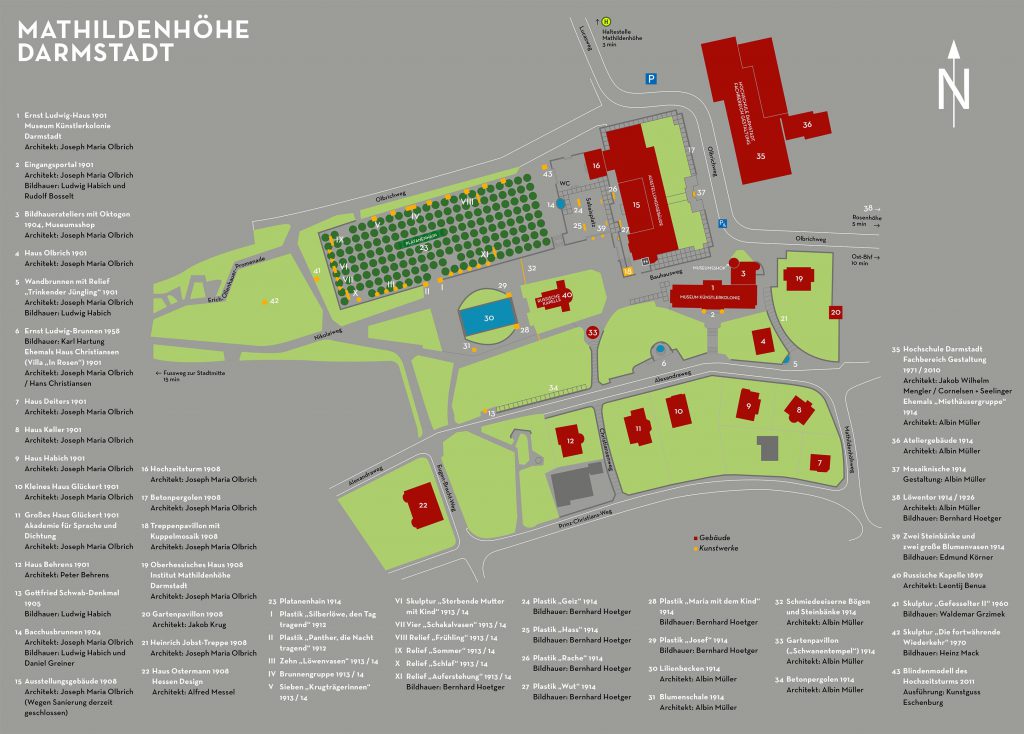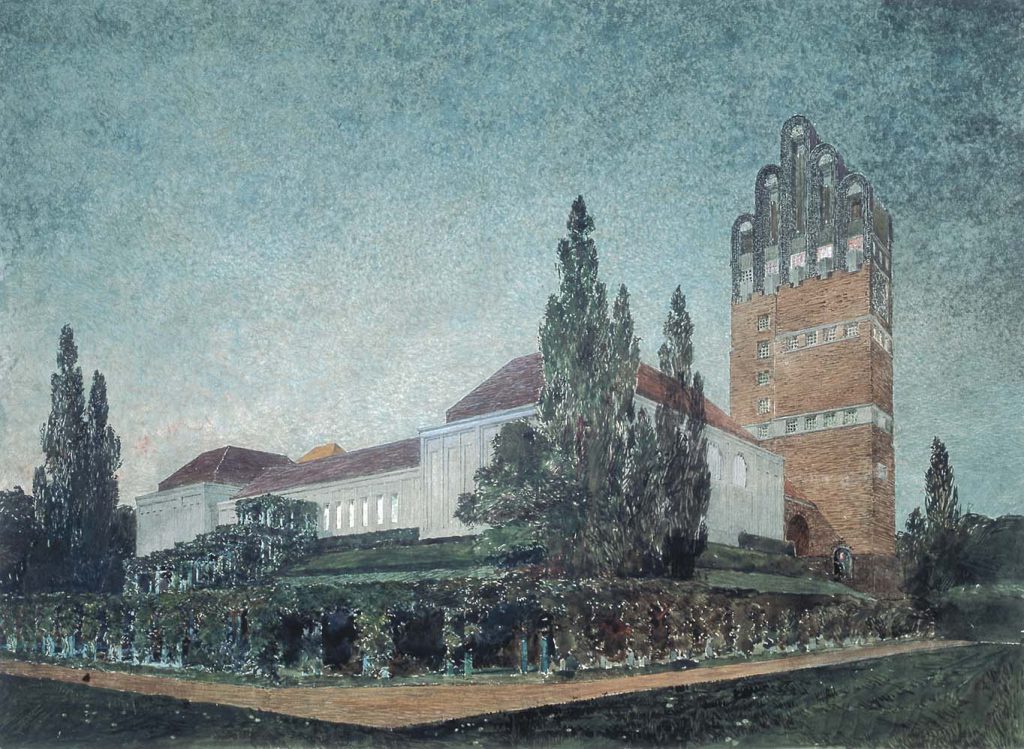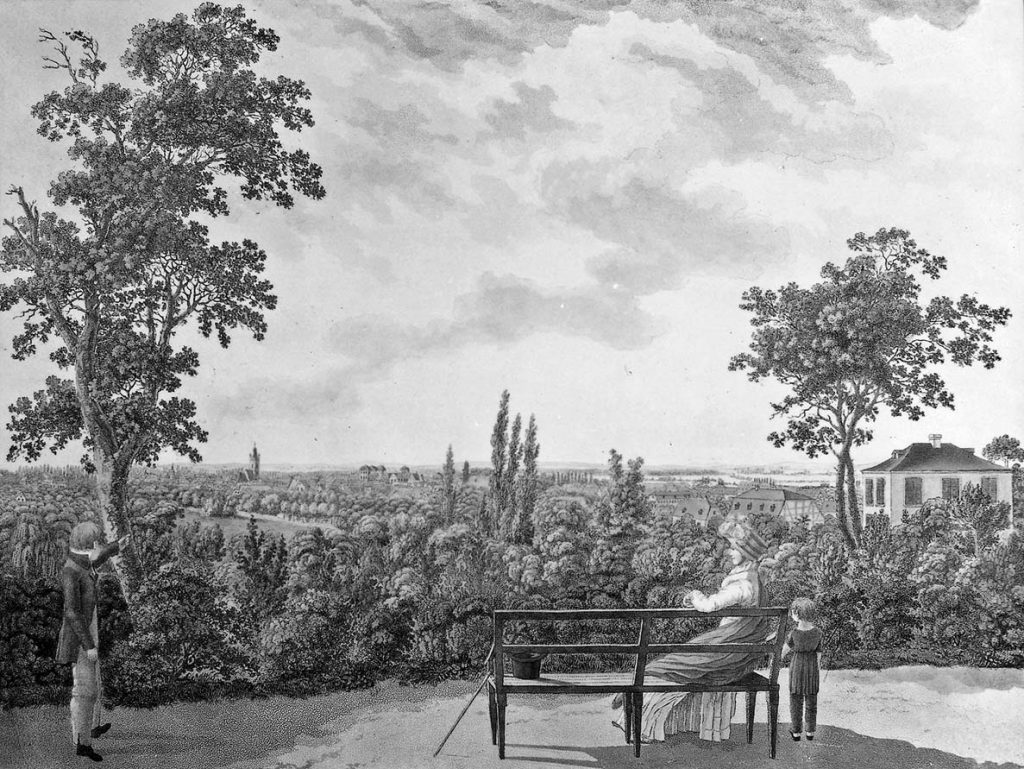For many centuries, the grounds of the Mathildenhöhe artists’ colony with the Wedding Tower and the exhibition halls had been used as a vineyard because of its favourable location. Around 1800, Prince Christian, Ludewigs I’s younger brother, initiated the conversion of this area into a park open to the public. In 1833, he gave it as a wedding present to the Hereditary Grand Duke Ludwig III and Mathilde who the park was finally named after.
Today, only the regularly structured plane tree grove is left from the former park. In 1880, the municipal water reservoir was built at the highest point of the hill, and, in 1899, the Russian Chapel which had been erected on behalf of Nikolaus II, the last Tsar of Russia, could be inaugurated. The Tsar had married Alexandra of Hesse, the Grand Duke Ernst Ludwig’s sister, in 1894 and needed an orthodox church for his visits to his wife’s hometown.
In the same year, the Grand Duke left the Mathildenhöhe park area as a building ground to the artists’ community he had summoned to Darmstadt. The Duke and the artists jointly developed the idea of making the future colony with its buildings the object of the first large exhibition on the Mathildenhöhe. On 15th May 1901, the exhibition opened under the name “Ein Dokument deutscher Kunst” (A Document of German Art).
So, the first exhibition of the artists’ colony on the Mathildenhöhe in 1901 gave the starting signal for the creation of the artists’ houses, the big studio building, which is now used as a museum, and the Wedding Tower erected for the third exhibition in 1908. The fourth and last exhibition of the artists’ colony took place in 1914 under the artistic direction of Albin Müller. He created the large water basin below the Russian chapel and thus completed the ensemble “Mathildenhöhe”, for which the city of Darmstadt is striving for acknowledgement as an UNESCO World Heritage.






